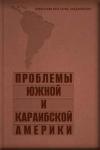2012 Failed States Index
Вход
Авторизуйтесь, если вы уже зарегистрированы
What does “failed state” mean?
“Failed state” is a state that is failing to perform some the basic functions of a sovereign state, such as loss of the physical control of its territory; loss of monopoly on the legitimate use of force; inability to interact with other states as a full member of the international community, to make legitimate decision and to provide its people with public services.

In 2005 The Fund for Peace presented The Failed State Index (FSI) – a leading index that allows to define current trends in social, economic and political pressures that affect all states and might bring some states to the brink of failure. In June, 2012 the Fund for Peace released the eighth edition of its annual Failed States Index. Only recognized sovereign states based on UN membership are included in the ranking. Though some countries are excluded from the ranking due to insufficient data. The ranking of 177 (plus South Sudan) nations reflects the level of their stability and the pressure they face. The lower the score, the better. The least stable state is Somalia that continues to sit atop the Failed States Index scoring 114,9 out of 120. Finland remains at best positions scoring 20. It is quite interesting that The Fund for Peace hasn’t yet given the highest score of 120 to any state.
In a globalized world fragile and weak states create serious challenges not only for their people, but for their neighboring countries and the international community. Just to name a few, the rise of uncontrolled terrorism, spreading violence, massive flows of refugees and so on. That is why, it is very important to understand the conditions that might push states to the brink of failure and to take the necessary measures to avoid negative effects.

Indicators
The Index is comprised of 12 indicators, which are divided into 3 groups: Social, Economic and Political/Military Indicators. Each Indicator is rated on a 1 to 10 scale with 1 (low) being the most stable and 10 (high) being the most at-risk of collapse and violence.

External Intervention Indicator
As noted above, it is necessary to track failing states in order to foresee the challenges that they may pose to the international community. But the international community itself affects country’s score. Its impact on the domestic policy of the country can be assessed via the “External Intervention” indicator, that includes pressures and measures related to foreign assistance, peacekeeping, presence of UN missions, foreign military intervention, sanctions and credit rating. As well, external interventions sometimes cause other indicators to change, for example, military interventions might spur more violence that would lead to the increase of Group Grievance’s score or they might affect the economic decline. It implies that humanitarian interventions might lead to a drastic increase in county’s score. Let’s take a look at Libya. According to FSI 2011 (the Index is based on the data from 2010) Libya scored 68,7 and after military intervention in 2011 it drastically increased its score to 84,9. Once again, the lower the score, the better. So, if before the country was steadily improving its index (with its ups and downs, of course) slowly approaching the group of stable countries, now it is in the category of countries with high warning of state’s failure. Its position slipped even further that it was in 2005. The decline was quite predictable, though the scale of that decline is quite terrifying. Well, on the other hand, nobody has intervened Syria yet its ranking significantly worsened from 85,9 in 2011 to 94,5 in 2012. It is too early to draw conclusions on the consequences of military intervention in Libya given that Libya’s score has a chance to improve by next year as a result of its recovery under the rule of moderates. Nevertheless, the drastic increase of the nation’s score should prompt us to think more about consequences of military intervention and its impact on country’s future.

Methodology
The methodology of the Failed States Index consists of three parts:
- content analysis of multiple English –language documents, news, reports and speeches;
- quantitative data from reliable institutions (WHO, World Bank, UNDP, UNHRC, Freedom House, etc);
- expert analysis that reviews each indicator for each country.
All quantitative and qualitative data is based on major events in the countries ranked. Using different algorithms the Fund for Peace’s special software performs content analysis of all collected information and produces a score. Then all scores are carefully examined by experts to exclude any misinterpretation of the raw data by the software. This methodological approach enjoys the benefits of combining both qualitative and quantitative expertise.
Criticism
Well, The Failed Sate Index presents useful facts and data, which, of course, allow us some room for interpretations and speculations. When analyzing the data one should always keep in mind that the Index is generalized as it is designed to compare countries in the first place. Therefore, it is important to look at the scores and indicators in the context of a particular country and our experience on the ground. So to say, we should try to seek a balance between facts on the one side and our wisdom, beliefs and strategic vision on the other side.
As well, the content analysis of the data includes only English-language publications, which means that some valuable information in other languages might not be taken into account. This might incite some speculations about biased approach to some examined countries.
Nevertheless, the Index is quite a reliable source providing relevant quantitative data that might be useful for analysis of the current trends in social, economic and political pressures that affect all states.





